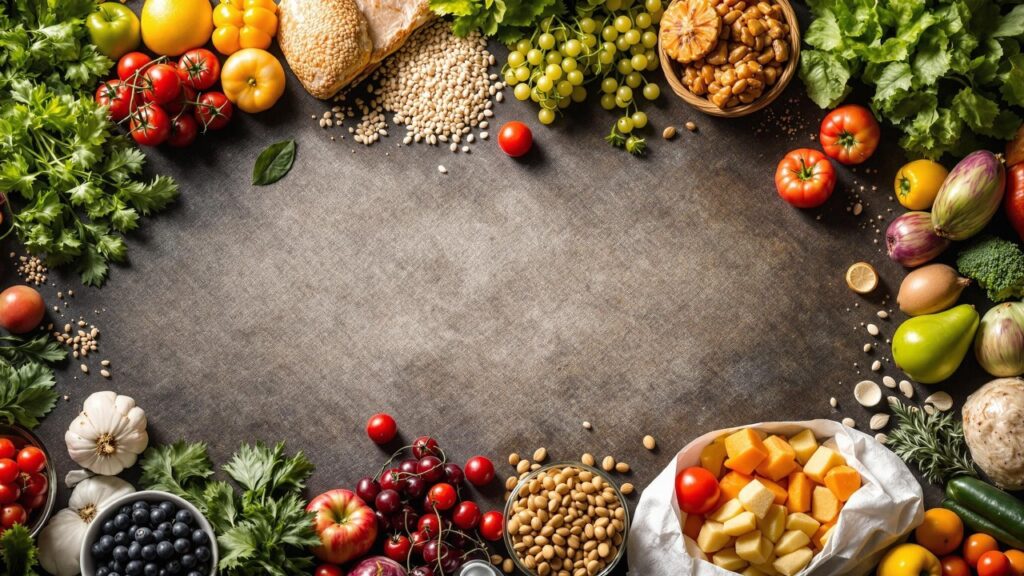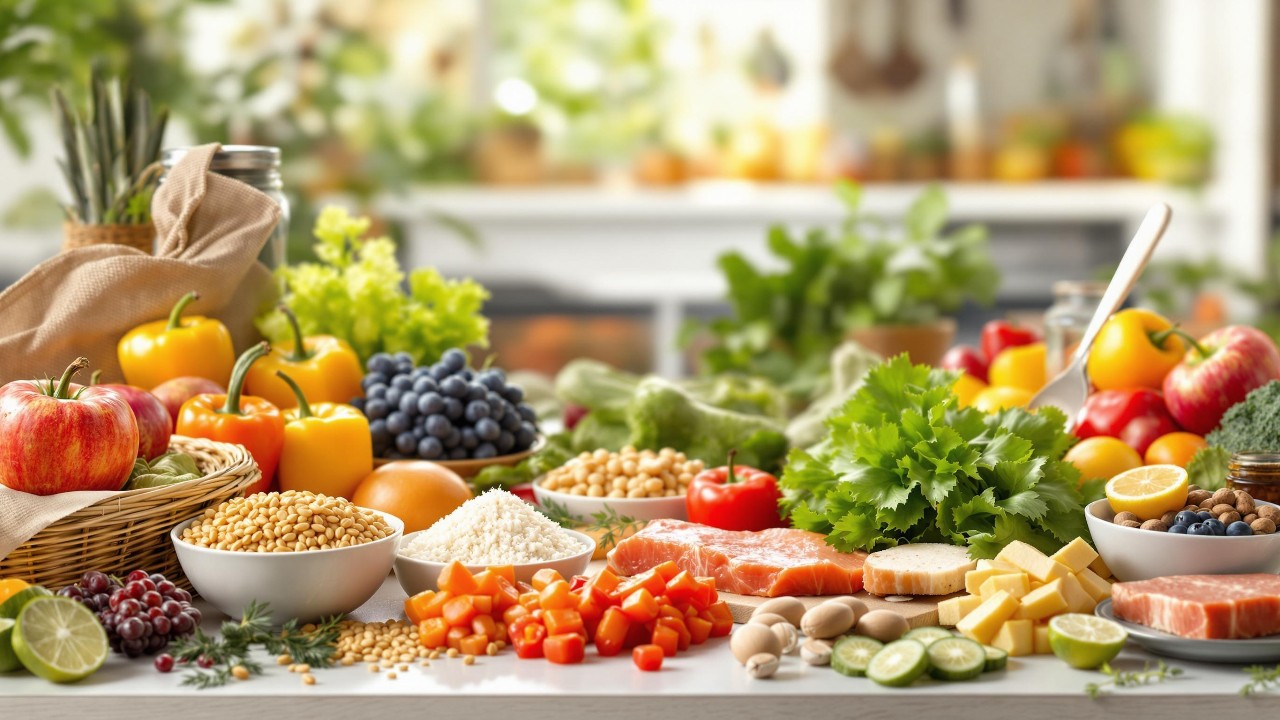Introduction
A weekly wellness newsletter is a fantastic way to share bite-sized nutrition wisdom, helping your readers make smarter food choices without feeling overwhelmed. Let’s face it—keeping up with healthy eating habits in today’s fast-paced world can feel like a never-ending challenge. But what if you could make it simple, engaging, and even fun?
Table of Contents
10 Essential Nutrition Tips for a Healthier Lifestyle

To keep your content fresh and impactful, we’ve rounded up 10 essential nutrition tips that will keep your audience engaged, informed, and inspired to prioritize their health. From healthy meal planning ideas to debunking common nutrition myths, these insights will make your newsletter a must-read every week!
1. Start with Simple, Actionable Nutrition Tips
Readers love practical advice they can apply immediately. Keep it simple, focusing on realistic and achievable nutrition changes:
- Swap processed snacks for whole, nutrient-dense alternatives like nuts, yogurt, or fruit.
- Increase fiber intake by adding more leafy greens, whole grains, and legumes to meals.
- Stay hydrated! Aim for at least eight glasses of water daily and experiment with herbal teas.
- Cut down on added sugar by choosing natural sweeteners like honey or dates instead of refined sugar.
- Make one small dietary change each week, such as replacing sugary sodas with sparkling water or adding an extra serving of vegetables to meals.
Why It Works: Digestible tips keep your audience engaged and encourage long-term behavior changes rather than quick fixes.
2. Make Nutrition Advice Engaging for All Audiences
A diverse audience means varying dietary needs and preferences. Tailor your content to different lifestyles:
- Busy professionals? Offer quick meal prep hacks and nutritious grab-and-go options.
- Parents? Share kid-friendly, healthy lunchbox ideas.
- Athletes? Highlight high-protein, muscle-recovery meals and hydration tips.
- Older adults? Recommend foods rich in calcium and vitamin D to support bone health.
- Vegetarians or vegans? Offer plant-based protein swaps and creative meatless recipes.
Pro Tip: Use storytelling! Feature real-life success stories from readers who have benefited from previous tips in your newsletter.
3. Promote Healthy Eating Habits with Meal Planning Strategies
Meal planning is a game-changer for making healthier choices throughout the week. Help your readers with:
- Batch cooking ideas to save time and reduce stress.
- A balanced plate method: 50% veggies, 25% protein, 25% whole grains.
- Seasonal shopping guides to encourage seasonal eating benefits and maximize nutrient intake.
- A meal prep challenge to encourage readers to prepare healthy meals for the week ahead.
| Day | Breakfast | Lunch | Dinner |
|---|---|---|---|
| Monday | Oatmeal + Berries + Almonds | Quinoa Salad + Grilled Chicken | Stir-fry + Tofu + Brown Rice |
| Tuesday | Greek Yogurt + Granola | Lentil Soup + Whole Grain Bread | Salmon + Roasted Veggies |
| Wednesday | Avocado Toast + Egg | Chickpea Wrap + Hummus | Turkey + Sweet Potato Mash |
| Thursday | Smoothie + Chia Seeds | Spinach Salad + Nuts | Baked Cod + Quinoa |
| Friday | Scrambled Eggs + Whole Toast | Brown Rice Bowl + Tofu | Pasta + Tomato Sauce + Veggies |
Why It Works: Planning ahead prevents impulsive, less nutritious food choices and helps stick to a balanced diet consistently.

4. Address Common Nutrition Myths
Misinformation runs rampant in the health world. Your newsletter is the perfect place to set the record straight:
- “Carbs are bad.” Truth: Whole carbs like quinoa and oats are nutrient powerhouses.
- “Fat makes you fat.” Reality: Healthy fats (avocados, nuts, olive oil) are essential for brain function and satiety.
- “Detox diets work.” Fact: Your liver and kidneys naturally detox your body!
- “Protein only comes from meat.” Plant-based sources like lentils, beans, and tofu offer ample protein.
Engagement Idea: Run a “Myth vs. Fact” section in your newsletter to educate and entertain your audience.
5. Incorporate Trending Nutrition Topics
Stay ahead of the curve by featuring hot nutrition trends in your newsletter:
- Gut health: Prebiotics and probiotics for digestion.
- Plant-based eating: The rise of flexitarian and vegan diets.
- Intermittent fasting: Pros, cons, and best practices.
- Anti-inflammatory diets: How foods like turmeric, berries, and leafy greens help reduce inflammation.
Why It Works: Readers appreciate up-to-date insights, positioning your newsletter as a trusted wellness authority.
6. Cater to Dietary Restrictions & Allergies
Not all readers can follow the same diet. Offer inclusive nutrition advice:
- Gluten-free? Suggest naturally gluten-free grains like quinoa, rice, and amaranth.
- Dairy-free? Recommend plant-based alternatives like almond or oat milk.
- Nut allergies? Swap in seeds (sunflower, chia) for healthy fats and protein.
- Low-carb? Suggest high-fiber, low-carb vegetables like spinach, cauliflower, and zucchini.
7. Explain the Role of Supplements in a Balanced Diet
Supplements can fill nutritional gaps but aren’t a cure-all. Educate your readers on which are actually beneficial:
- Omega-3s for brain health.
- Vitamin D for immune support.
- Probiotics for gut health.
- Magnesium for muscle function and sleep.
8. Encourage Sustainable & Eco-Friendly Eating Habits
Many people want to eat healthier while minimizing their environmental impact. Include tips like:
- Buy locally sourced and organic produce.
- Reduce food waste with smart storage techniques.
- Eat more plant-based meals to lower carbon footprint.
- Support ethical and sustainable food brands.
9. Highlight Energy-Boosting & Immunity-Strengthening Foods
No one wants to feel sluggish! Encourage foods that naturally boost energy and immunity:
- Energy: Bananas, nuts, lean proteins, and whole grains.
- Immunity: Citrus fruits, garlic, turmeric, and green tea.
- Mood-boosting: Dark chocolate, berries, and fermented foods.
10. Inspire Long-Term Healthy Eating Habits
It’s all about sustainability. Help readers create lasting changes:
- Keep a food journal to track eating habits.
- Practice mindful eating—slow down and enjoy your meals.
- Set small, realistic goals rather than drastic overhauls.
- Celebrate progress instead of striving for perfection.
Conclusion
A well-crafted weekly wellness newsletter empowers your audience with practical, engaging, and science-backed nutrition tips. Covering trending topics, debunking myths, and offering actionable advice ensures readers return week after week.
Now, it’s your turn! Which tip will you include in your next newsletter? 🚀



